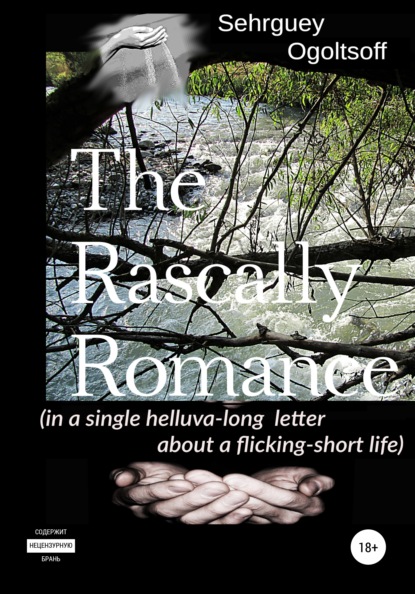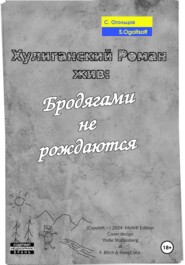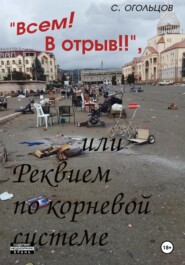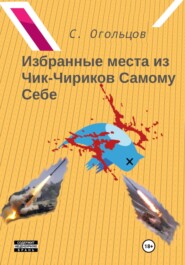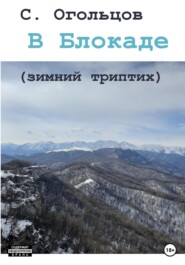По всем вопросам обращайтесь на: info@litportal.ru
(©) 2003-2024.
✖
The Rascally Romance (in a single helluva-long letter about a flicking-short life)
Настройки чтения
Размер шрифта
Высота строк
Поля
Koobrik was four two-tier bunk beds set in two rows closely, side by side, separated from the neighboring koobriks by narrow passages where you collided with those who slept in the next koobrik's beds. The collisions were just inevitable because the width of the inter-koobrik passage was dictated by the 40-centimeter-wide cabinet-box crammed in between the bunk beds and bounding the passage with 8 newbies who rush to their bunks. Oops!. Ouch!.
Under the top of the 70-centimeter-tall cabinet-box, there was a drawer. The door below the drawer provided access to the inside shelves. Those 2 shelves and the drawer were allotted to 8 people whose bunk beds towered above the half-meter-wide 4-meter-long passage. If any of the beds in the passage was occupied by a grandpa, then all of the cabinet-box, the drawer as well as both shelves under it, was his sovereign stowage whose indivisible immunity was not a matter for the feeblest discussion. In case it was a pheasant but not a grandpa, he could farm out the lower shelf, still, not every pheasant would.
Construction battalion trained you to live lightly and not burden yourself with things you could do without. As for your safety razor, it could find a place on the shelf of the buddies from your draft who happened to have neither oldies nor birds in the passage of their koobrik…
Raising questions before commanding officers had undesirable backwash on the state of health. The "pheasant-grandpa" system was the pledge of military discipline in the army, and an officer with disregard to it was sawing off the bough he sat upon. Therefore, in case of being addressed with some complaint, he complained about you to the "grandpas". In the evening, the officer would go home after his day at the service, and at night the "grandpas" were damaging your state of health.
Yet, all that was to be discovered later, and now the Sergeants were walking along the central aisle of the training barrack, looking for a footcloth wound not accurately enough around its boot top, or a belt dropped in a hurry over the stool in a careless manner, or the absence of any part of outfit – the son of a bitch had dived under the blanket half-dressed!.
Finding where to find fault, they commanded a general "get up!" and the training began anew. No chance that we had started doing the job any better, most likely, the Sergeants themselves wanted to sleep. After another "lights-out!" they did not command "get up!" and the long fluorescent tubes in the ceiling over the central aisle were switched off, except for the one over the cabinet-box at the entrance to the barrack. Its remote light was not a hindrance, you could close your eyes and…
"Get up!!"
What? What for?! O, shit, it's morning! And where's the night?
(…I have told already that time in the army is a dirty bitch, ain't I?.)
~ ~ ~
A couple of "get up!" were conducted without much of nit-picking though, just to remind you're in the army now, bastards. Which leniency was caused by the breakfast ahead, and if we were late for it, the cook-grandpa would hail the Sergeants with his "J'ai presque d? attendre" from the dispenser window.
(…the kings of France had a special courtier whose job was to clap his pole against the floor and thus bring attention to the monarch’s entry to this or that hall in one or another of the royal palaces. The clap was coupled with the strident yell, "His Majesty the King!"
So, one day at the Louvre, Louis of Certain Number, approaching the door to the general hall, noticed that the announcer was not in place. Maybe, dropped around a corner to correct a certain kind of mess in his outfit…
Yet, at the very last moment, directly from nowhere, the courtier with the pole ducked in the doorway and—as required by the statute—boomed his bang into the floor, "His Majesty the King!"
In fact, the King hadn't even had to march on the spot, and passing by the servant, without much fuss, he reproached him in a royally dignified way:
"J'ai presque d? attendre."
When translated from French, it means "I almost had to wait"…)
But the grandpa in the window would translate it another way:
"You, fucker! Got too fucking cocky, eh? They threw that Sergeant stripe-snot across your shoulder-strap and you lost your scent? I fucking fuck your fucking rank and you too! You once again be late and I'll have you dispensing the fucking pots. You fucking cock!"
And the Sergeant would have nothing to parry such a translation with, because if though not a "cock", yet for the current period, he still was just a pheasant.
(…What on earth could any king have to do with our construction battalion? The most intimate connection. The commonly used, albeit unofficial, denomination of the Soviet Army military construction battalions—aka conbats—was "the royal troops".
Got that under your belt? On we go.
The outfit of the military conbat soldier, aka conbatist, consisted of a khaki piss-cutter with a small red-cherry star screwed in its bow with the still smaller yellow sickle-and-hammer inside. The star was a very important detail called to make easy seeing the front from the rear in that headgear.
On the strength of its shape, the piss-cutter was of no use for protecting the soldier's ears. When caught in the strong wind or rain, you could turn off the cap's flaps and pull it on your skull, yet the trick bestowed on the serviceman the looks of a mugger in a "condom"-hat.
Under certain circumstances, the conbatist could even put his piss-cutter crosswise, that is, with the star transferred into position above one or another of his ears. The cap applied in that manner was supposed to present a motif "a-la Tricorn of Bonaparte", however, on the whole, that looked like a dull moron with the star on the side of his fucking gibbosity.
Alternately, the head of the conbat soldier might be covered with a forage cap, but, according to the Statute of Inner Service, the forage cap should co-occur with the jacket and trousers over the blunt-nosed high shoes of black leather. Such a set was briefly referred to as "parade-crap" (ceremonial uniform) with black shoulder-straps on the shoulders of the jacket. (…black is always in vogue…)
The black insignia fields up the lapels of the ceremonial outfit were decorated with miniature emblems of military construction troops, made of a light yellow alloy. The same emblem was repeated in a larger size on the forearm part of the jacket's left sleeve, but already without any metal impurities.
The Brief Heraldic Explication of the Conbat Emblem
“Battalion Commander pours forth Thunder-and-Lightning;
Ensign trots like a squirrel in the Wheel;
I dropped the Anchor and don't care a fuck,
They won't urge me onward
Not even with the fucking Bulldozer.”
*
*
*
Between the parade-crap jacket lapels peeped a khaki shirt and a necktie of a darker hue of khaki with the elastic string—like that in underpants—hidden under the collar and secretly holding the tie in place.
But let's turn back to the casual (everyday) uniform the upper part of which (the cap) has already been exposed, in general.
The innermost layer of those sheathing a conbatist were underpants and a tank-shirt (in winter long-sleeve undershirt and long johns).
These next to the skin items at the following (moving outward) lever had a composite cover of the khaki cotton jacket without any shoulder-straps (in case you got promoted to any rank distinguished by a number of yellow stripes across the shoulder-strap, then you were in charge of procuring the needed insignia).
Five round buttons of light green plastic had no holes but a single protruding eyelet in the underbelly so as to save their entire globoid faces for the embellishing bass-relief of pentacle star that contained sickle and hammer (crisscross) in its center, all of which served to fasten the jacket's front vertically. The skirts of the jacket reached the middle of the thighs and its sides had straight pockets—just below the waist—covered with flaps wide enough to prevent ground getting inside when the conbatist dug holes. The buttons in the wide sleeve cuffs were of the same green plastic, and of the same design, but thrice smaller in size.
Under the left breast in the jacket, there was the inner sack-like pocket of khakied burlap.
Besides the jacket, the second level layer in casual uniform included trousers—some proud manifestation of the ideals of pragmatism—two cotton pipes of legs, narrowing downwards, overlaid with large patches on knees for hardening and prolonging the service life of the whole item, two upright pockets on the hips had no flaps and the small smooth buttons of emblematic decorations to operate the fly. (Just for the record, at each of the leg down apertures there also was an inch-wide strip sewn across the openings but the fanciful additions got cut off at once so that they wouldn't fuck your brains nor rub your soles.)
In winter the cap was replaced by a hat with ear-flaps made of artificial gray fur. The fastening strings at the flap tips allowed for wearing such a hat in four distinct manners:
1. "ears up"-type, aka King Solomon Crown;
2. "ears pressed under the back of the head"-type, aka Cautious Rabbit;
3. "ears loosened"-type, aka Hawk Coasting Proudly;
4. "ears tied under the chin"-type, aka Sparring Partner.
A padded jacket constituted the outmost layer worn in winter. Upright stitches, keeping the wool lining in place, gave the padded jacket a hybrid-like looks of epic heroes combat outfit and concentration camp uniform, only in an unvarying khaki color.
Instead of a padded jacket, a soldier could wear a pea-jacket with the smooth outside surface. The latter surpassed the padded jacket in many ways. Firstly, there was twice as much wool in its lining and hence it was warmer. Secondly, it reached the middle of the thighs, covering the groin and buttocks from the nasty extremes of winter weather.
And one final glimpse of the parade-crap, not to omit the double-breasted greatcoat of cloth-felt completing the ceremonial ensemble in winter.
The greatcoat ended a bit below the knees and had 2 vertical rows of yellow metallic buttons (same bass-relief of the loaded star etc.) on the breast (one of the rows decorative). Behind—across the sacrum—the short strip of same-fabric, half-belt, with a buttons at each end (both decorative), under which, just next to the rectum, started the vertical gash splitting the skirts – in case of the need to quicken the pace or for any other needs.
Under the top of the 70-centimeter-tall cabinet-box, there was a drawer. The door below the drawer provided access to the inside shelves. Those 2 shelves and the drawer were allotted to 8 people whose bunk beds towered above the half-meter-wide 4-meter-long passage. If any of the beds in the passage was occupied by a grandpa, then all of the cabinet-box, the drawer as well as both shelves under it, was his sovereign stowage whose indivisible immunity was not a matter for the feeblest discussion. In case it was a pheasant but not a grandpa, he could farm out the lower shelf, still, not every pheasant would.
Construction battalion trained you to live lightly and not burden yourself with things you could do without. As for your safety razor, it could find a place on the shelf of the buddies from your draft who happened to have neither oldies nor birds in the passage of their koobrik…
Raising questions before commanding officers had undesirable backwash on the state of health. The "pheasant-grandpa" system was the pledge of military discipline in the army, and an officer with disregard to it was sawing off the bough he sat upon. Therefore, in case of being addressed with some complaint, he complained about you to the "grandpas". In the evening, the officer would go home after his day at the service, and at night the "grandpas" were damaging your state of health.
Yet, all that was to be discovered later, and now the Sergeants were walking along the central aisle of the training barrack, looking for a footcloth wound not accurately enough around its boot top, or a belt dropped in a hurry over the stool in a careless manner, or the absence of any part of outfit – the son of a bitch had dived under the blanket half-dressed!.
Finding where to find fault, they commanded a general "get up!" and the training began anew. No chance that we had started doing the job any better, most likely, the Sergeants themselves wanted to sleep. After another "lights-out!" they did not command "get up!" and the long fluorescent tubes in the ceiling over the central aisle were switched off, except for the one over the cabinet-box at the entrance to the barrack. Its remote light was not a hindrance, you could close your eyes and…
"Get up!!"
What? What for?! O, shit, it's morning! And where's the night?
(…I have told already that time in the army is a dirty bitch, ain't I?.)
~ ~ ~
A couple of "get up!" were conducted without much of nit-picking though, just to remind you're in the army now, bastards. Which leniency was caused by the breakfast ahead, and if we were late for it, the cook-grandpa would hail the Sergeants with his "J'ai presque d? attendre" from the dispenser window.
(…the kings of France had a special courtier whose job was to clap his pole against the floor and thus bring attention to the monarch’s entry to this or that hall in one or another of the royal palaces. The clap was coupled with the strident yell, "His Majesty the King!"
So, one day at the Louvre, Louis of Certain Number, approaching the door to the general hall, noticed that the announcer was not in place. Maybe, dropped around a corner to correct a certain kind of mess in his outfit…
Yet, at the very last moment, directly from nowhere, the courtier with the pole ducked in the doorway and—as required by the statute—boomed his bang into the floor, "His Majesty the King!"
In fact, the King hadn't even had to march on the spot, and passing by the servant, without much fuss, he reproached him in a royally dignified way:
"J'ai presque d? attendre."
When translated from French, it means "I almost had to wait"…)
But the grandpa in the window would translate it another way:
"You, fucker! Got too fucking cocky, eh? They threw that Sergeant stripe-snot across your shoulder-strap and you lost your scent? I fucking fuck your fucking rank and you too! You once again be late and I'll have you dispensing the fucking pots. You fucking cock!"
And the Sergeant would have nothing to parry such a translation with, because if though not a "cock", yet for the current period, he still was just a pheasant.
(…What on earth could any king have to do with our construction battalion? The most intimate connection. The commonly used, albeit unofficial, denomination of the Soviet Army military construction battalions—aka conbats—was "the royal troops".
Got that under your belt? On we go.
The outfit of the military conbat soldier, aka conbatist, consisted of a khaki piss-cutter with a small red-cherry star screwed in its bow with the still smaller yellow sickle-and-hammer inside. The star was a very important detail called to make easy seeing the front from the rear in that headgear.
On the strength of its shape, the piss-cutter was of no use for protecting the soldier's ears. When caught in the strong wind or rain, you could turn off the cap's flaps and pull it on your skull, yet the trick bestowed on the serviceman the looks of a mugger in a "condom"-hat.
Under certain circumstances, the conbatist could even put his piss-cutter crosswise, that is, with the star transferred into position above one or another of his ears. The cap applied in that manner was supposed to present a motif "a-la Tricorn of Bonaparte", however, on the whole, that looked like a dull moron with the star on the side of his fucking gibbosity.
Alternately, the head of the conbat soldier might be covered with a forage cap, but, according to the Statute of Inner Service, the forage cap should co-occur with the jacket and trousers over the blunt-nosed high shoes of black leather. Such a set was briefly referred to as "parade-crap" (ceremonial uniform) with black shoulder-straps on the shoulders of the jacket. (…black is always in vogue…)
The black insignia fields up the lapels of the ceremonial outfit were decorated with miniature emblems of military construction troops, made of a light yellow alloy. The same emblem was repeated in a larger size on the forearm part of the jacket's left sleeve, but already without any metal impurities.
The Brief Heraldic Explication of the Conbat Emblem
“Battalion Commander pours forth Thunder-and-Lightning;
Ensign trots like a squirrel in the Wheel;
I dropped the Anchor and don't care a fuck,
They won't urge me onward
Not even with the fucking Bulldozer.”
*
*
*
Between the parade-crap jacket lapels peeped a khaki shirt and a necktie of a darker hue of khaki with the elastic string—like that in underpants—hidden under the collar and secretly holding the tie in place.
But let's turn back to the casual (everyday) uniform the upper part of which (the cap) has already been exposed, in general.
The innermost layer of those sheathing a conbatist were underpants and a tank-shirt (in winter long-sleeve undershirt and long johns).
These next to the skin items at the following (moving outward) lever had a composite cover of the khaki cotton jacket without any shoulder-straps (in case you got promoted to any rank distinguished by a number of yellow stripes across the shoulder-strap, then you were in charge of procuring the needed insignia).
Five round buttons of light green plastic had no holes but a single protruding eyelet in the underbelly so as to save their entire globoid faces for the embellishing bass-relief of pentacle star that contained sickle and hammer (crisscross) in its center, all of which served to fasten the jacket's front vertically. The skirts of the jacket reached the middle of the thighs and its sides had straight pockets—just below the waist—covered with flaps wide enough to prevent ground getting inside when the conbatist dug holes. The buttons in the wide sleeve cuffs were of the same green plastic, and of the same design, but thrice smaller in size.
Under the left breast in the jacket, there was the inner sack-like pocket of khakied burlap.
Besides the jacket, the second level layer in casual uniform included trousers—some proud manifestation of the ideals of pragmatism—two cotton pipes of legs, narrowing downwards, overlaid with large patches on knees for hardening and prolonging the service life of the whole item, two upright pockets on the hips had no flaps and the small smooth buttons of emblematic decorations to operate the fly. (Just for the record, at each of the leg down apertures there also was an inch-wide strip sewn across the openings but the fanciful additions got cut off at once so that they wouldn't fuck your brains nor rub your soles.)
In winter the cap was replaced by a hat with ear-flaps made of artificial gray fur. The fastening strings at the flap tips allowed for wearing such a hat in four distinct manners:
1. "ears up"-type, aka King Solomon Crown;
2. "ears pressed under the back of the head"-type, aka Cautious Rabbit;
3. "ears loosened"-type, aka Hawk Coasting Proudly;
4. "ears tied under the chin"-type, aka Sparring Partner.
A padded jacket constituted the outmost layer worn in winter. Upright stitches, keeping the wool lining in place, gave the padded jacket a hybrid-like looks of epic heroes combat outfit and concentration camp uniform, only in an unvarying khaki color.
Instead of a padded jacket, a soldier could wear a pea-jacket with the smooth outside surface. The latter surpassed the padded jacket in many ways. Firstly, there was twice as much wool in its lining and hence it was warmer. Secondly, it reached the middle of the thighs, covering the groin and buttocks from the nasty extremes of winter weather.
And one final glimpse of the parade-crap, not to omit the double-breasted greatcoat of cloth-felt completing the ceremonial ensemble in winter.
The greatcoat ended a bit below the knees and had 2 vertical rows of yellow metallic buttons (same bass-relief of the loaded star etc.) on the breast (one of the rows decorative). Behind—across the sacrum—the short strip of same-fabric, half-belt, with a buttons at each end (both decorative), under which, just next to the rectum, started the vertical gash splitting the skirts – in case of the need to quicken the pace or for any other needs.





